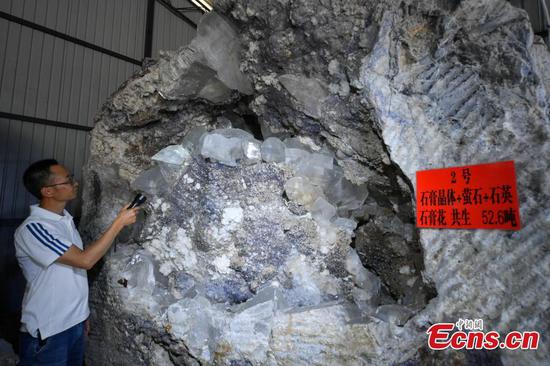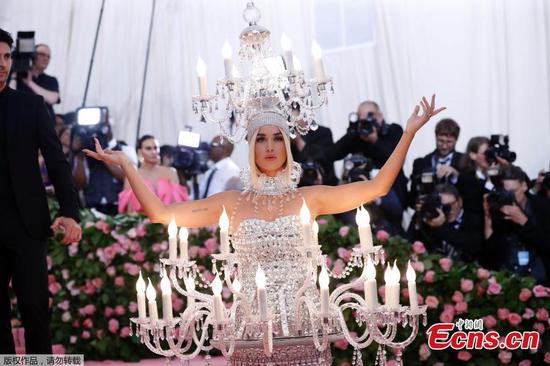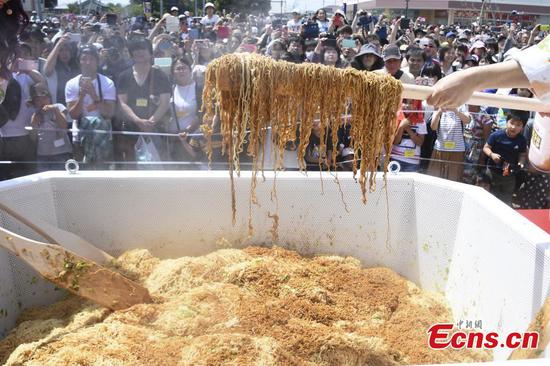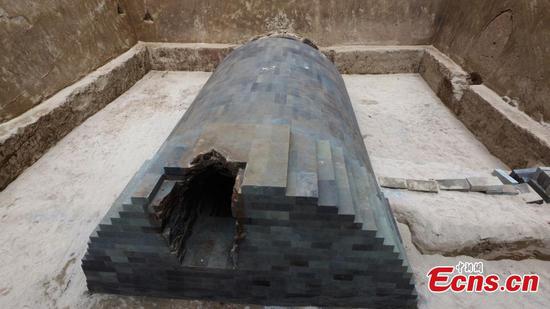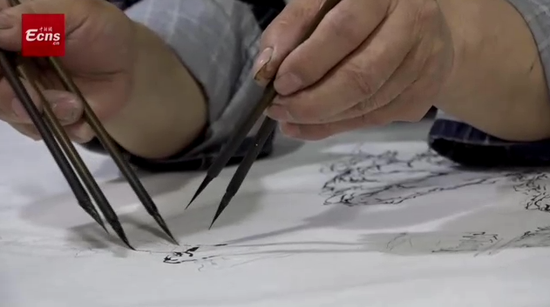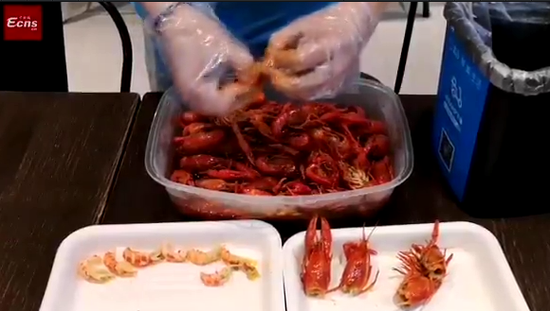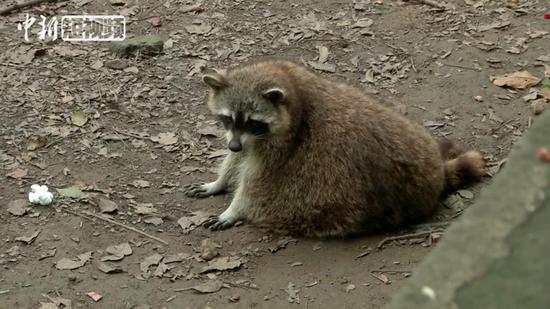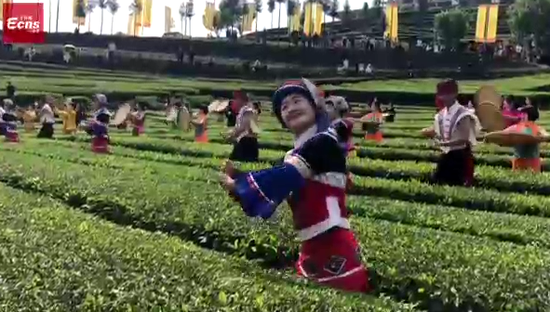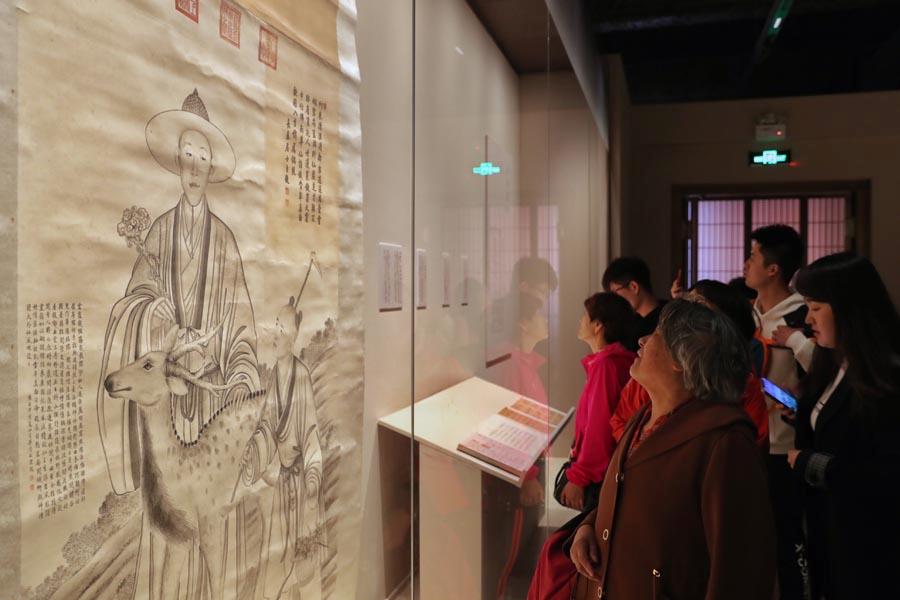
Visitors view a portrait of Emperor Qianlong among 100-odd paintings and calligraphy works of the 18th century, which reflect fine art achievements of the royal family and high officials of the Qing Dynasty (1644-1911). (PHOTO/CHINA DAILY)
Emperor Qianlong's passion for calligraphy and painting is the subject of an ongoing exhibition at the Palace Museum.
If he had not become emperor, Qianlong, whose reign lasted from 1736 to 1795 during the Qing Dynasty (1644-1911), would have instead seen his name etched in history as an artist or a writer.
Even as a ruler known for presiding over an era of booming social prosperity in China, the emperor was adept at taking time out from running state affairs to explore his passion for fine art.
It is difficult to calculate just how many ink-on-paper works by Qianlong remain in existence, but on one occasion alone in 2014, researchers from the Palace Museum in Beijing-China's former imperial palace also known as the Forbidden City-discovered more than 28,000 handwritten poems penned by the emperor in an old royal warehouse.
Qianlong's lifelong affection for art had a powerful influence over the entire imperial court during his reign, which is the subject of an ongoing exhibition at the Palace Museum running through June.
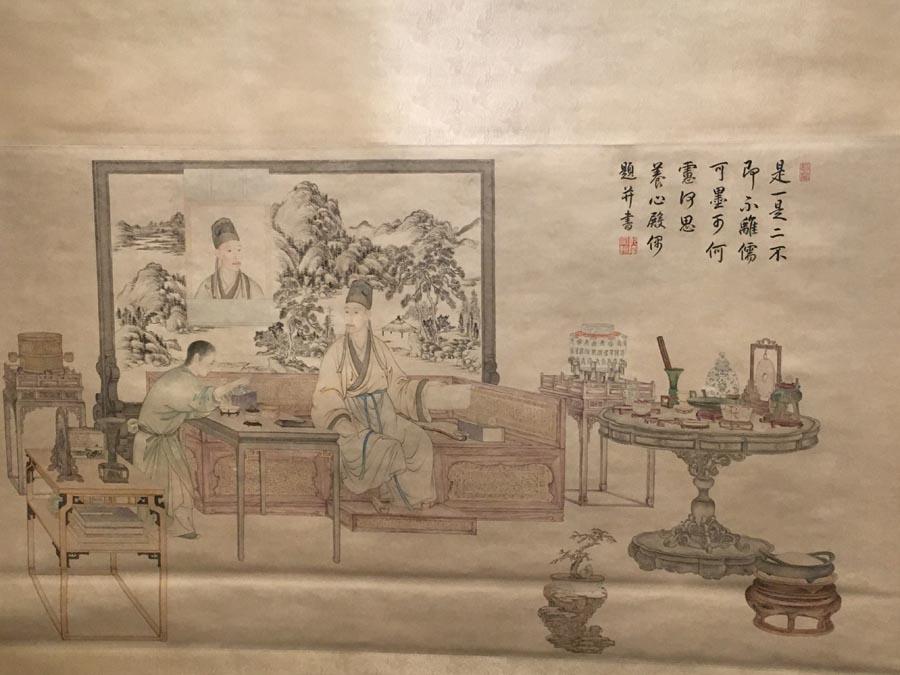
Shi Yi Shi Er Tu, a highlighted exhibit of the ongoing display, which shows Emperor Qianlong's pursuit of literati style. (PHOTO/CHINA DAILY)
Joyful Leisure: Calligraphy and Paintings by the Emperor Qianlong and His Court Officials, an exhibition being held at the Hall of Literary Glory (Wenhua Dian), presents over 100 of the finest works produced by the emperor, his close courtiers and other members of the royal family. More than half of the works have never been publicly displayed before.
"Emperor Qianlong's fondness for calligraphy and painting laid an important foundation for the development of the two art forms within the court," Zhao Ziru, curator of the exhibition, says. "He oversaw great achievements in the fields of landscape painting, works detailing birds and flowers, as well as the development of figure painting."
According to Zhao, the emperor also maintained the practice of reproducing model calligraphy and guided court calligraphers in their practice and large-scale development of this art.
Qianlong's taste for calligraphy and painting is perhaps best exemplified by Stone Moat, or Shiqu Baoji, a monumental 44-volume compilation that comprehensively catalogs the royal inventory of art works, and one that remains a crucial reference point for Chinese art history today.
In 1746, the emperor had a dedicated study-the Hall of the Three Rarities (Sanxi Tang)-built at his residence to display his three favorite works of calligraphy.
![Qianlong\'s handwritten copy of three calligraphy masterpieces from the Eastern Jin Dynasty that he had collected. [PHOTO BY WANG KAIHAO/CHINA DAILY]
The \](http://www.ecns.cn/hd/2019/05/07/be3eba105e0e46328d5b38c02e7df51b.jpg)
Qianlong's handwritten copy of three calligraphy masterpieces from the Eastern Jin Dynasty that he had collected. [PHOTO BY WANG KAIHAO/CHINA DAILY]
The "three rarities", all dating back to the Eastern Jin Dynasty (317-420), are fine art icon Wang Xizhi's Clearing After Snowfall, his son Wang Xianzhi's Mid-Autumn Festival and Wang Xun's Letter to Boyuan. Due to their age and the fragility of paper-based artworks, the trio are generally considered among the most precious remnants in the history of Chinese calligraphy.
One of the works on display, Dong Bangda's landscape Memories of the Hall of the Three Rarities, places Wang Xizhi at the center of the image as if to depict the emperor reimagining his idol, according to a long paragraph of emotional comments Qianlong left on one corner of the painting.
Zhao says the emperor created dozens of reproductions of the "three rarities", according to records in the Stone Moat, and one of these works appears in the exhibition.
"Through this, Qianlong is showing his devotion to the origins of traditional Chinese calligraphy," she says.
Following his edict, Qianlong's courtiers produced Model Books of Calligraphy From the Hall of Three Rarities, which features more than 300 reproductions of the most important works of calligraphy from Chinese history. "This represents a major contribution to the inheritance of ancient Chinese art," Zhao says.
Another highlighted exhibit that comes from Qianlong is his reproduction of the Northern Song Dynasty (960-1127) painting, Elegant Gathering in the Western Garden. The original painting portrays a group of celebrated literati of the time, including Su Shi, Mi Fu, Huang Tingjian and Li Gonglin.
Other signatures on the painting suggest the work was jointly produced by the emperor and several of his courtiers.
Apparently, Qianlong wanted a similarly elegant gathering in the Forbidden City as well.
"The high officials surrounding Qianlong were a group of literati with fine cultural tastes," the curator says. "They shared the emperor's emotions."
In 1743, Qianlong invited the capital's literati to attend the first tea party at the Palace of Double Glory (Chonghua Gong) in the Forbidden City, which became a tradition during his reign.
"The emperor set a theme for each party, and wrote impromptu poems, prompting the guests to follow suit," Zhao says. "This helped to form a closer bond between the ruler and court officials."
Shi Yi Shi Er Tu (The One and Two), another painting on display, is an apparent reflection of the emperor's ideals. The painting depicts Qianlong, dressed in the style of a Han Chinese literati despite being a Manchu, sitting in his study. A portrait of him hangs on the screen behind him.
The scene presents an impromptu question: Which one is Qianlong's true identity? The one on the throne with ultimate power in real life, or the one in the painting who revels in joyful leisure?










